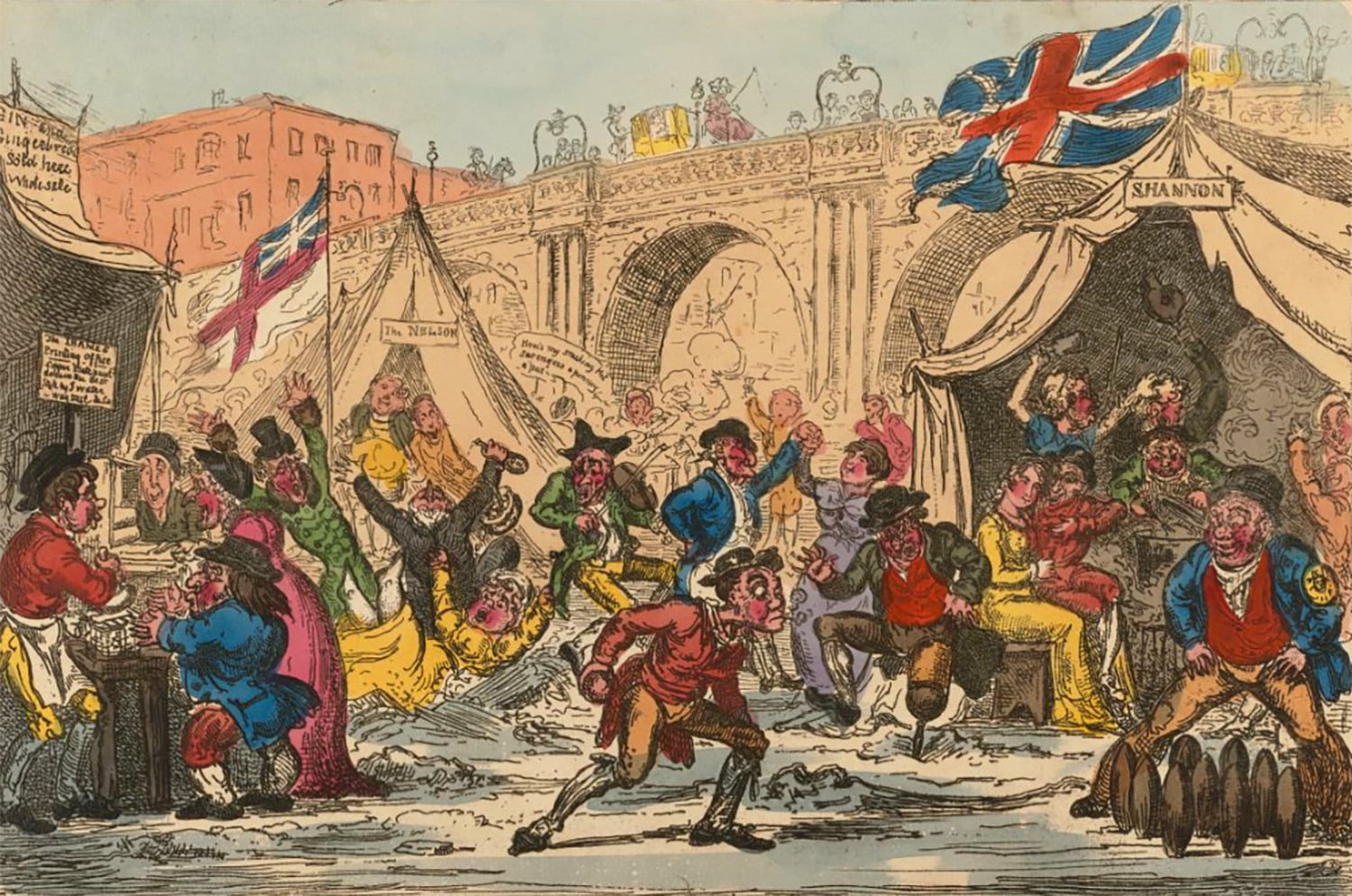Borough Market at war
How the Borough Market managed to keep feeding London through two world wars despite chronic understaffing and the threat of bombing raids


“THE REMAINING PORTERS WERE IN THEIR FIFTIES AND SIXTIES. THINK DAD’S ARMY, BUT WITH BUSHELS OF POTATOES”
Words: Mark Riddaway
World War I
Thomas Haynes, the superintendent and clerk of Borough Market, was used to handling problems. During his stewardship, the Market was one of Britian’s largest fruit and veg wholesale operations, and the logistics involved in keeping everything flowing smoothly were never short of intimidating. The superintendent’s life was a whirl of litigation, insurance claims, political lobbying and clashes with traders: disputes over the accuracy of the weighbridge, complaints about litter or inappropriate behaviour, arguments about the tardy payment of rent. Then, in July 1914, Europe went to war, and Mr Haynes’s problems got a whole lot more serious.
Hard though it is to imagine now, knowing what we know of the pitiless slaughter that ensued, but the outbreak of the First World War led to a rush of young men eager to enlist. Pumped up with patriotism and convinced they’d be home by Christmas, they queued for hours at recruitment offices, desperate to serve.
These patriots included almost all of Haynes’s staff. Before the start of the war, Borough Market employed 20 porters, their numbers bolstered by regular casual workers. The site was maintained by two full-time handymen and policed by a team of beadles. Most of these were fit, strong and youthful – the kind of men the armed forces were crying out for. One by one, they went to their boss and announced their intention to do their duty for King and country. Haynes did nothing to stand in their way.
The Market began to buckle under the strain. By the end of 1915, 12 of the 20 porters had shipped off to the front, while another two had left to work in munitions factories. Both handymen had also joined up. Even Haynes’s young office clerk, HF Jackson, had exchanged his ledgers for a rifle. The remaining porters were supplemented by a couple of new recruits, but of eight men now doing the job of 20, three were in their mid-fifties and three in their sixties: gnarly and experienced but starting to struggle with the intense physical demands of the job. Think Dad’s Army, but with bushels of potatoes.
In November 1915, Haynes wrote to the authorities desperate that they refuse to accept into the forces any more of the Market’s military-age staff: the accountant, S Bentley; the inspector of the beadles, W Carpenter; and the two fit, young porters that remained, W Dale and W Bach. “To carry on our work has been a most difficult task for some months past, but my trustees have raised no objections to members of their staff enlisting,” he explained. “They now feel, however, that if the Market is to continue its existence as a food distributing centre, the irreducible minimum has been reached.”
Shortly afterwards, with legislation in the pipeline to introduce mass conscription, Haynes attempted to have his two young porters listed as being in ‘reserved occupations’ vital for the war effort. It was an on-going struggle – in November 1916 he was again forced to devote his time to resisting the War Office’s attempts to ship Dale and Bach to Flanders.
It wasn’t just market porters who left Borough in their droves. Haynes was constantly writing character references for employees of the fruit and veg stalls who were entering the forces, or else signing requests to postpone the conscription of staff during harvest periods, particularly during soft fruit season. In January 1917, Haynes wrote to one trader to apologise for being unable to help him find much-needed help on the stall. “Everybody is now down to rock bottom,” he explained.
And yet the Market struggled on, year after year, bringing vital supplies to a much-stretched nation, despite a skeleton staff of slightly decrepit old gentlemen. It even recovered from a German air raid on 5th December 1917, which caused substantial damage to Haynes’s offices and the Market roof. The Market survived, the war eventually ended, some of the traders and porters even made it home. And Thomas Haynes was finally able to get back to worrying about litter and profanities and conflicts over rent, just like the good old days.
World War II
Borough Market survived the Great War, and it just about survived the Second World War too. Between 1939 and 1945, Borough Market continued to function as a vital link in the city’s food supply chain. Unlike meat, butter and sugar, fruit and vegetables were never rationed by the government, but the war effort did result in severe shortages. As a result, the scale of the operation at Borough was significantly curtailed from its pre-war peak, but it never stopped – despite the bombs.
During the Blitz of 1940-1941, Southwark was the most heavily bombed of the inner London boroughs, with 1,651 high-explosive bombs and 20 parachute mines landing on this densely populated area in a period of just eight months. Many of the railway arches around London Bridge were used as air-raid shelters, where the scrabble for sanctuary became a nightly ordeal.

On 29th September 1940, four Borough Market trustees, including three members of the Cheeseman family, were killed while acting as air-raid wardens on Great Guildford Street. A fifth trustee, also a warden, died a few weeks earlier at a shelter on Ewer Street.
The Market itself survived relatively intact. One bomb fell on Green Dragon Court, causing significant damage to the Market’s roof – shrapnel marks from this explosion can still be seen on Southwark cathedral – and another fell on the junction of Southwark Street and Stoney Street.
Working under the constant threat of the Luftwaffe wasn’t easy for anyone. As a wholesale market, a lot of Borough’s most intensive work was done in the very early morning, when greengrocers would arrive on their carts to stock up with fresh produce for the day. The strict blackout restrictions imposed by the government to inhibit the targeting abilities of the bombers meant that the traders’ pre-dawn activities were carried out in eerie, difficult darkness.
Although their intensity dropped off after the horrible peak of the Blitz, German raids carried on intermittently throughout the war, and the workers at Borough Market never felt entirely safe. Then, in 1944 a new threat emerged: rockets, which fell from the sky with no warning at all, often in broad daylight. On 22nd January 1945 a massive V2 missile hit Borough High Street near the junction with Southwark Street. Dozens of people were killed in the Mosers ironmongery workshop that occupied the site, and around 200 other buildings in the vicinity of the market were destroyed or damaged.
Standing at the site of that attack now, watching shoppers meandering in a carefree manner towards the market, set on buying some beautiful ingredients or drinking some excellent coffee, it’s hard to imagine this being a theatre of war – but in the 1940s that’s exactly what Southwark was. Borough Market survived, but many in its community tragically didn’t.


